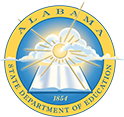UP:SC15.ES.10
Vocabulary
- bioassessment
- water conservation
- water treatment
- eutrophication
- industrial effluents
- agricultural runoff
- point pollution
- nonpoint pollution
- Environmental Protection Agency (EPA)
- EPA Safe Drinking Water Act
- Clean Water Act
- hydrological cycle
- watershed
- free and total chlorine
- total hardness
- pH
- total alkalinity
- nitrate
- nitrite
- contaminant
- aquifer
- surface water
- groundwater
- permeability
- recharge zone
- potable
- pathogens
- water management
- dam
- reservoir
- heavy metals
- wastewater
- desalination
- water table
- industrial waste
- sludge
- phytoremediation
- mechanical treatment - precipitators, scrubbers, trickling filters, flocculation
- sedimentation
- suspended solids
Knowledge
Students know:
- The types and uses of natural water resources.
- Structure of a watershed and its functions through time.
- Strategies for water management and conservation.
- Sources of freshwater and ocean water pollution.
- Legislation that addresses the protection of natural water resources.
- Methods of water treatment.
Skills
Students are able to:
- Identify sources of point and nonpoint contamination.
- Identify natural water resources and factors that affect them.
- Obtain, evaluate, and communicate information on the properties, uses, and pollutants of natural water resources.
- Analyze and interpret data to evaluate water resources and EPA standard limits.
- Make a quantitative or qualitative claim regarding the relationship between a natural water resource and a factor that negatively impacts its use/function.
- Investigate and assess the health of natural water resources.
- Design or refine a solution to protect natural water resources, based on scientific knowledge, student-generated sources of evidence, prioritized criteria, and trade-off considerations.
- Identify costs, safety, aesthetics, reliability, cultural and environmental impacts of proposed solution.
Understanding
Students understand that:
- Resource availability has guided the development of human society.
- Scientists and engineers can develop technologies that produce less pollution and waste and that preclude ecosystem degradation.
- When evaluating solutions, cost, safety, reliability, and aesthetics must be taken into consideration, as well as any social, cultural, and environmental impacts.
- The sustainability of human societies and the biodiversity that supports them requires responsible management of natural resources.
Scientific and Engineering Practices
Constructing Explanations and Designing Solutions
Crosscutting Concepts
Cause and Effect
